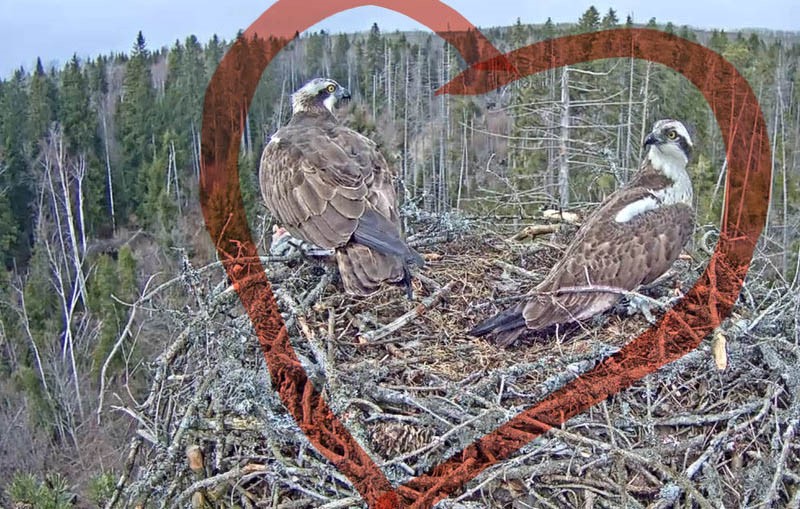Text: Urmas Sellis, Estonian Ornithological Society
Transmission courtesy of Kernel, Tele2 and EENet
Supported by KIK
Translation Liis
There are two cameras on osprey nests in Estonia, one in Võru County and the other in Tartu County.
We can watch the Võru County nest from 2012 onwards.
Direct stream | News | Forum
Stream for mobile devices: iPhone, iPad, Windows Phone 10; Android, VLC
For older computers: flash
We built the Võru County osprey camera nest in 2011 as substitute for the natural one that collapsed. It was located 300 m away and the osprey pair at once took the artificial nest with the camera as their own. The history of the nest can be read on the introduction page of the forum. The migration paths of female Piret can be seen on the migration map (autumn 2012 and spring 2013). We have not managed to remove Piret’s transmitter that does not work but we know that she nested later in a completely new area (ca 35 km towards SE)). The nesting of the ospreys has offered some soap opera-like happenings each spring. All important events have been reflected in the forum.
The transmission 2017 from the Võru County nest takes place from April 11; the image from the camera goes from the MikroTik antennas provided by Kernel to the nearest mobile tower and from there by Tele2 cables to the EENet server. The EENet serves distributes it to all interested viewers.
The camera at the nest is a new AXIS F41 with a microphone built by Omar.
----------------------------------------------------------------------------------------------
The Tartu County nest has been on line from 2013.
Click on the image to watch direct stream. The image was captured and completed by forum member Sappheira.
Direct stream | News | Forum
Stream for mobile devices: iPhone, iPad, Windows Phone 10; Android, VLC
Older computers: flash
The Tartu County osprey nest was built as substitute for the natural nest that collapsed in the winter of 2013; it was located about 50 m away. The osprey pair at once accepted the artificial nest with the camera. The history of the nest can be read on the introductory page of the forum. The female Irma has been the same for 4 years but her males have varied. During the first two years the male was Ilmar whose migration can be seen on the migration map (autumn 2012 and spring 2013). Ilmar’s transmitter was removed in summer 2013. During the last few years the nesting ospreys have mostly had rings so their origin and age has been well known. For instance in spring 2017 a female hatched in eastern Latvia (red ring 718) arrived at the nest. What will happen if Irma returns? All important events are reflected in the forum.
The 2017 transmission from the Tartu County nest started on March 16. The image from the Tartu camera goes along the Kernel communication channels to the EENet server. The EENet server distributes it to all interested viewers.
At the nest is a new AXIS F41 camera with a microphone constructed by Omar.
Many helping hands have contributed to the realisation of the osprey cameras:
Kotkaklubi (Eagle Club) – early preparation of the nests and help in installing the cameras
EENet – coding of the stream and distribution to viewers; recording of material
Beta-Grupp – testing and tumning of cameras; construction of microphones
TELE2 – tower, installing of antenna in tower, use of fibre optic cable (Võru County)
Kernel – fitting of antennas, communication channel (Tartu County)
AkuPluss – help with batteries
Ain Nurmla – help in installation of camera (Võru County)
Bea – administration of osprey forum
Looduskalender – home of cameras and forum
Many private supporters - in Estonia and abroad (e g Hawaii) materials and equipment
Thousands of viewers – who are the most important since otherwise the cameras would not have so much sense!
The osprey cameras operate autonomously without external power and data communication. The power comes from the sun; it is stored in batteries to achieve stability. The data are forwarded by Wi-Fi links to a broadband tower at a distance of some kilometres.
Participating in the venture:
Supporting:









